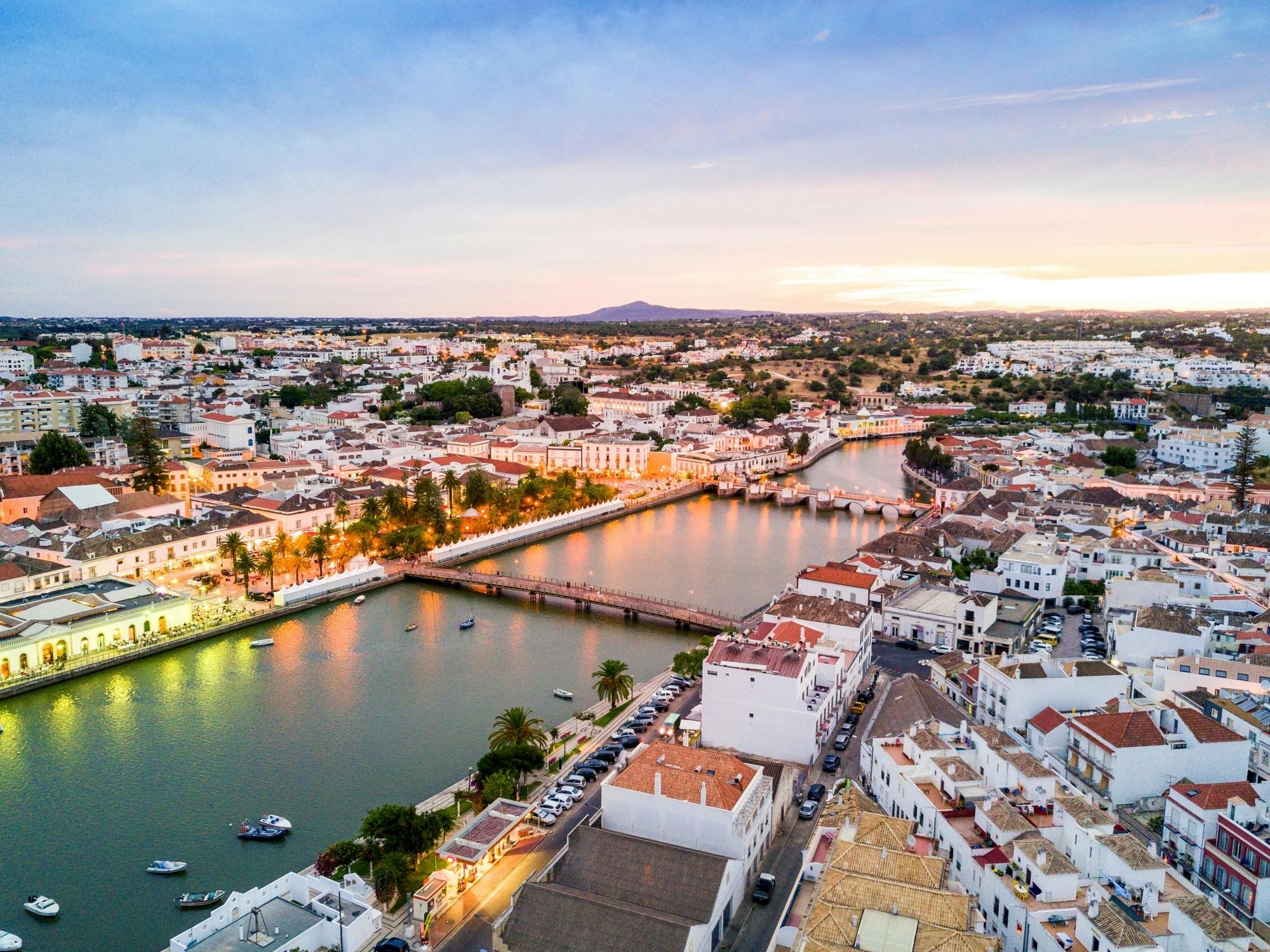
Imagine yourself in a small seaside town, calm and with your feet in the water… If you haven’t heard of Tavira yet, know that it truly deserves your attention ! Located at the far east of the region (about 30 km from Faro, towards the Spanish border), it offers a delightful mix of history, nature, and local life…
Let us take you on a journey through this town, as if you were already there (don’t forget your sunglasses and SPF50+ sunscreen !)
A bit of history to set the scene
The town of Tavira has very ancient roots. Excavations reveal a Phoenician presence as early as the 8th century BC… The Romans then settled here, taking advantage of its strategic coastal position.
Later, the Moors left a deep mark on the architecture and even on the town’s name : “Tavira” is believed to come from the Arabic Tabira, meaning “the hidden one” (in other words, the hidden town, of course !).
Tavira Castle sits perched on the hill and still reminds us today of this millennial history… After the great earthquake of 1755, the town was partially destroyed but managed to rise again while preserving its soul.
Why Tavira remains so authentic
Tavira has kept the atmosphere of a small village, a little removed from the tourist crowds. The historic centre is crossed by the Gilão River, charming visitors with its cobbled streets, whitewashed houses, and façades covered in azulejos (those typical Portuguese tiles).
You won’t find large hotel complexes here… but rather family-run guesthouses, small-scale hotels, and above all, cafés where time seems to stand still, along with lively markets (the so-called “feiras”).
What to see and do in Tavira
Start your day with a visit to Tavira Castle, which offers a superb view over the red rooftops and the river (this is the perfect time to take out your camera !) Then cross the Roman bridge (fun fact : this bridge is actually of Moorish origin), it’s one of the most photographed landmarks in town…
.jpeg?2025-11-04T08%3A43%3A46.066Z)
© portugalauthentique
Wander through the flowered streets, discover hidden little squares, and stop at a café terrace to enjoy a freshly baked pastel de nata (or perhaps a delicious Bola de Berlim !).
Don’t miss the municipal market; it’s a must-visit spot for locals, where colours, scents, and accents blend together… Freshly caught fish, cheeses, fruits, olive oil, carob, everything here breathes the generosity of the south !
And of course, it’s impossible to leave Tavira without taking the ferry to Tavira Island. Eleven kilometres of golden beaches, dunes, and preserved pine forests await you… A little paradise for lovers of nature and tranquillity, and perfect for fans of sun-soaked relaxation (like us) !
If you’re into sports, kayaking or paddleboarding in the Ria Formosa will surely delight you ! This natural park is a true sanctuary for migratory birds and sparkling lagoons (for a moment, you might even forget you’re in Portugal!).
Tavira for food lovers
The pleasures of the table are an integral part of the local (and Portuguese!) culture. And we’ve found some great dining spots for you to try.
Come na Gaveta (Av. Dr. Mateus Teixeira de Azevedo 36) is a gastro-bar perfect for sharing tapas and reinvented burgers; Nó de Gosto (Praça Dr. António Padinha 11) is ideal for an aperitif or a light dinner; À Mesa Tavira is an elegant restaurant offering Portuguese cuisine with a contemporary twist; Restaurante o Noel (R. Poe. Emiliano da Costa) serves authentic Portuguese dishes made with fresh local ingredients!
As for specialties, let yourself be tempted by the famous cataplana de peixe, a traditional Algarve fish and seafood stew. And if that’s not your thing, you can always go for the Atlantic tuna (often caught locally).
And of course, don’t forget to book ahead (especially in high season) and choose restaurants in the town centre or by the riverside for a typically Taviran atmosphere!
A few practical tips for your stay
When to visit ?
Spring and autumn are ideal: temperatures are mild, the atmosphere peaceful, and prices a bit lighter than in summer… During the low season, you’ll discover the real face of Tavira, far from the summer crowds.
How to get to Tavira ?
The nearest airport is Faro (about a 30-minute drive away). Tavira is also served by the Portuguese regional train (Comboios de Portugal), which connects Faro to Vila Real de Santo António.
Should you rent a car ?
Tavira is a small town where everything can be done on foot, the historic centre, the markets, the restaurants… However, if you want to explore the beaches or nearby villages, we’d still recommend renting a car.
And if you want to live here ?
Tavira is attracting more and more expats, drawn by its gentle way of life, affordable housing, and excellent quality of life. You’ll find international schools, medical services, and a warm, welcoming community…
Tavira is a perfect summary of the best the Algarve has to offer: rich heritage, peaceful landscapes, generous gastronomy, and friendly people.
Share this article
Suggested articles
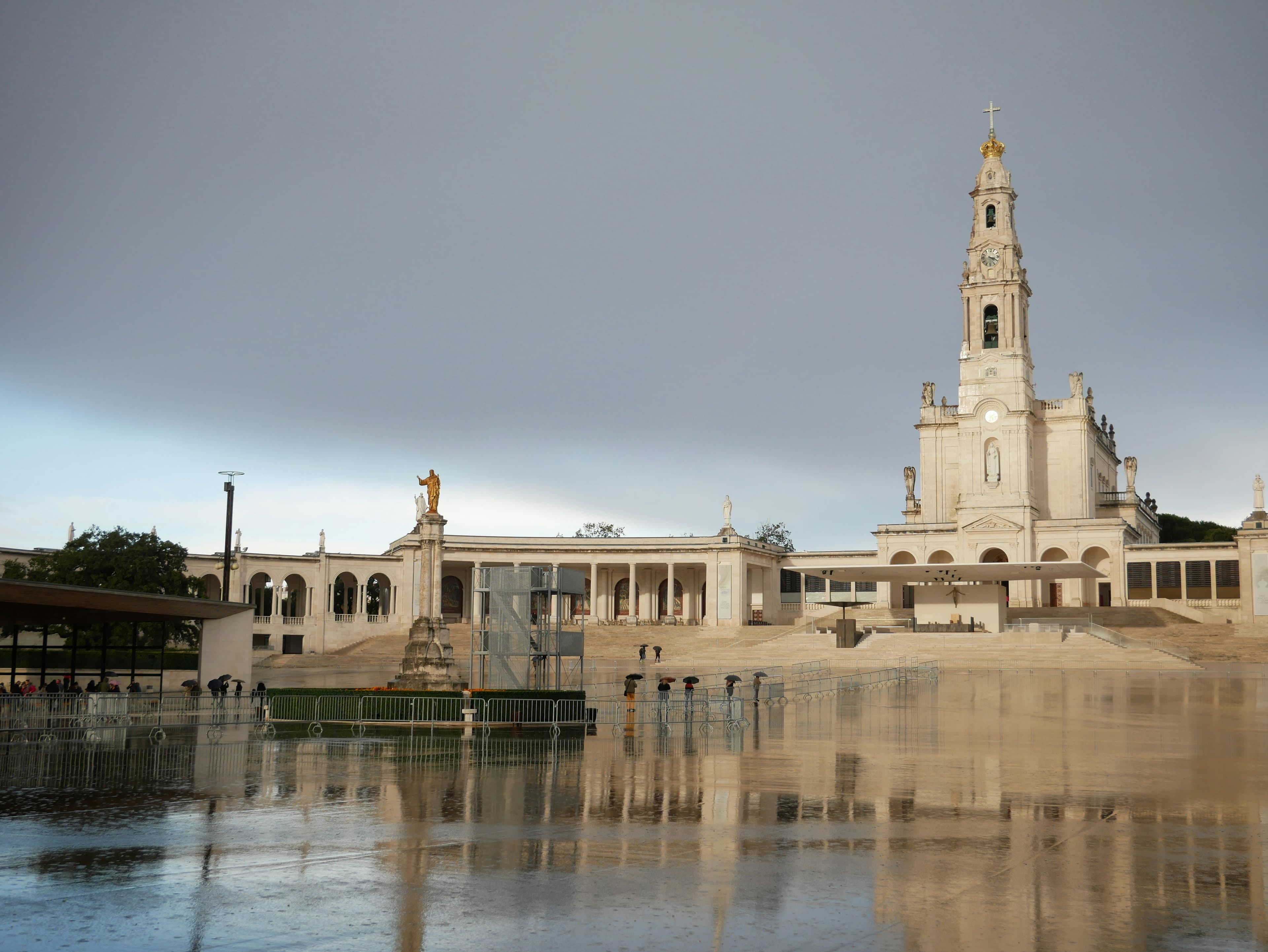
Fatima, a spiritual place of reference
In the heart of Portugal, more precisely in the Central region, the town of Fátima stands as one of the most powerful symbols of spirituality in the world. Yes, you read that correctly! Every year, it welcomes millions of pilgrims from around the globe to relive the Marian apparitions of 1917 and to find a moment of reflection within the majestic Sanctuary of Our Lady of Fátima…

Bairrada, Land of Suckling Pig and Sparkling Wine
In the heart of central Portugal, between the valleys of the Mondego and Vouga rivers, lies the region of Bairrada, a land where vineyards meet pig farms, where the slow heat of wood-fired ovens blends with the effervescence of sparkling wine. Here, every meal is a ritual and every sip a celebration. If you’re looking for an authentic Portugal, far from seaside clichés, let yourself be charmed by Bairrada, a land of indulgence, warmth, and tradition.
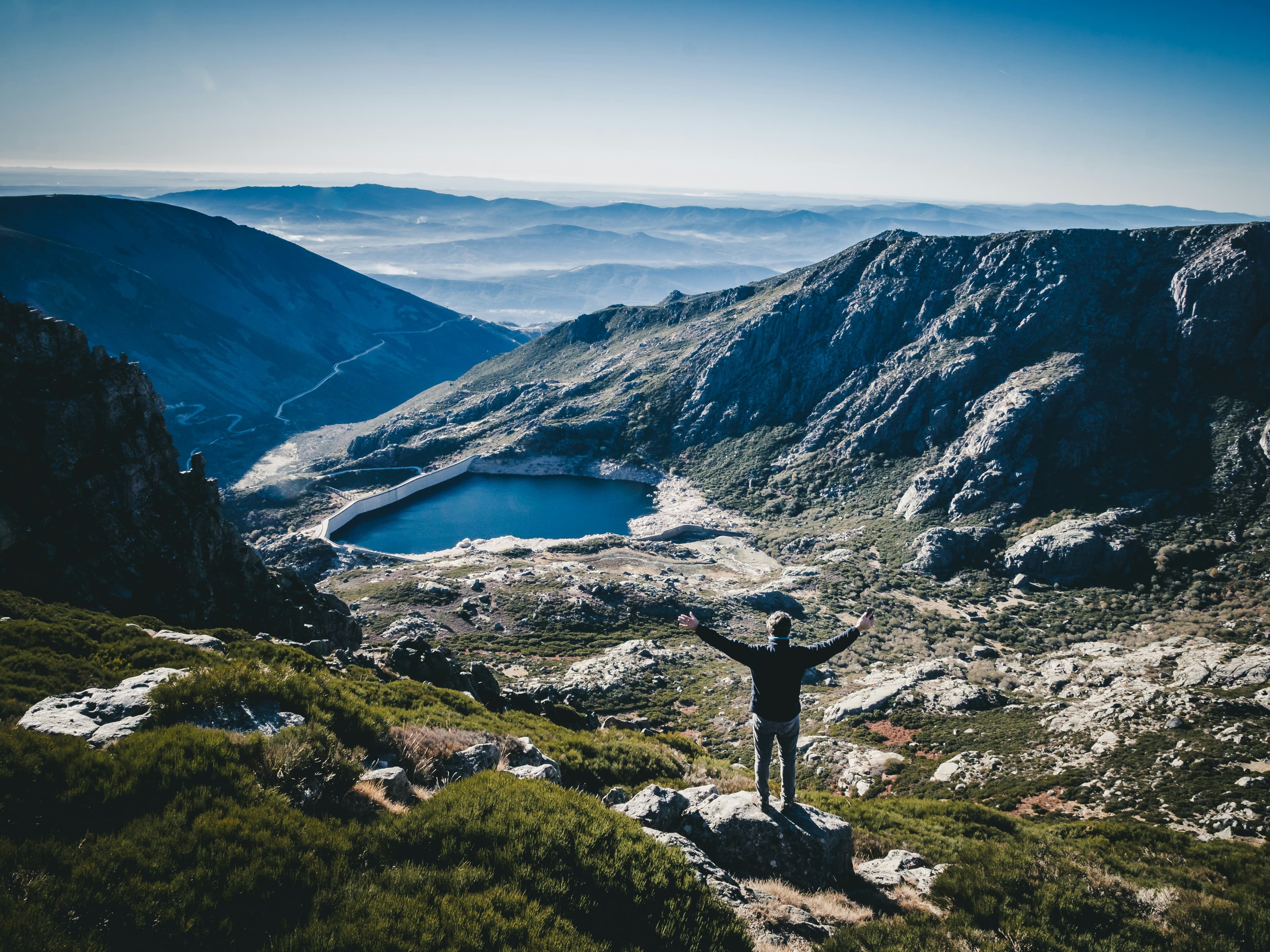
Serra da Estrela, The Roof of Portugal
It’s impossible not to think of Serra da Estrela when visiting Portugal… Perfect for a mountain getaway, this destination sits slightly off the beaten path, perched in the heart of the country’s central region! Literally translated as “the Star Mountain Range,” Serra da Estrela shows a very different side of Portugal: quieter, more authentic… this mountain truly deserves your attention, and we’ll tell you exactly why!
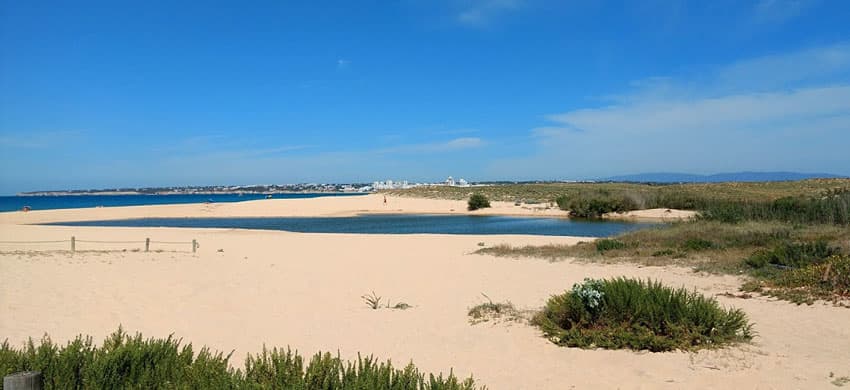
Nazaré Beaches and Their Giant Waves
Nazaré is a charming coastal town in Portugal, globally renowned for its giant waves crashing onto Praia do Norte… you’ve probably seen them on TV ! But beyond this impressive natural phenomenon, Nazaré offers a variety of beaches suitable for all tastes, from famous surf spots to family-friendly relaxation areas.
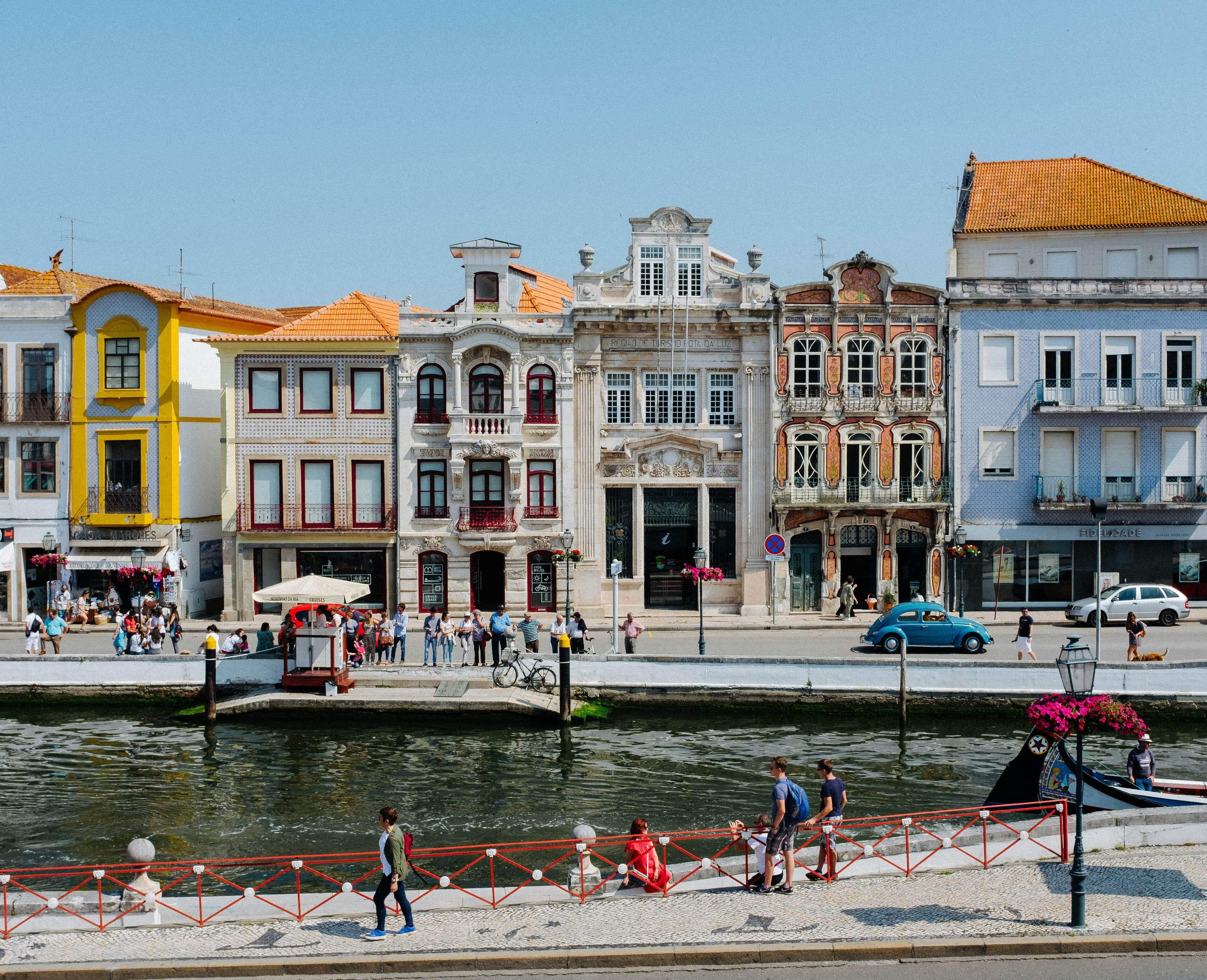
Aveiro, the Portuguese Venice
Situated between Porto and Lisbon, the city of Aveiro is often called the “Venice of Portugal” due to its picturesque canals, colourful houses, and rather romantic atmosphere… But Aveiro is much more than that : it is a city rich in traditions, gastronomy, and history!

Coimbra, One of Europe’s Oldest Universities
Located in the heart of Portugal, the charming city of Coimbra is home to one of the most prestigious and oldest academic institutions in Europe: the University of Coimbra! Founded in 1290 by King D. Dinis, it is not only the oldest university in Portugal but also one of the oldest in Europe. Classified as a UNESCO World Heritage Site since 2013, the university embodies academic excellence, tradition, and, above all, Portuguese culture.


